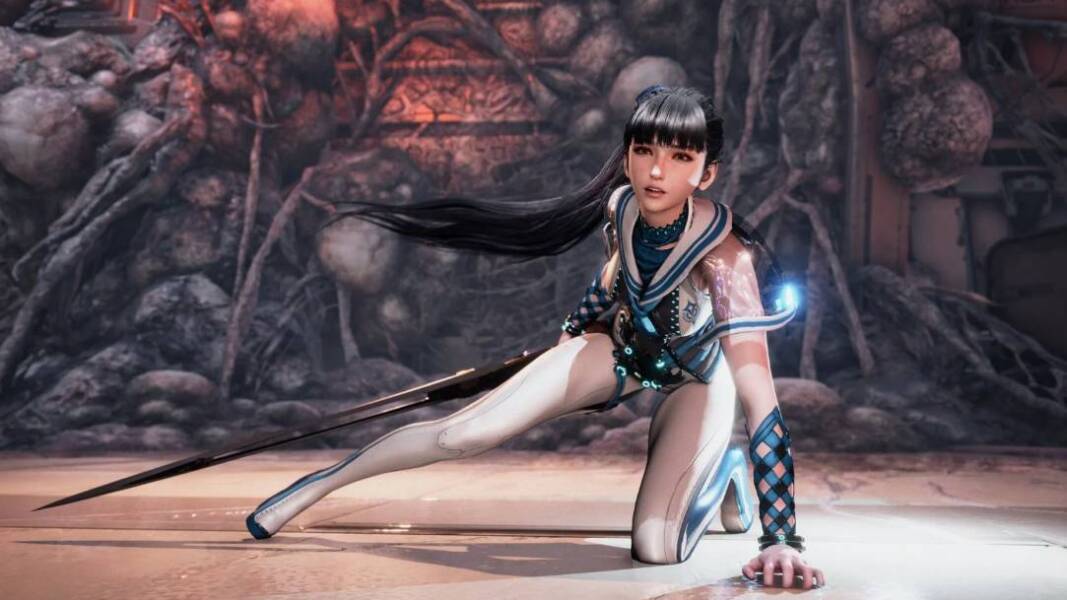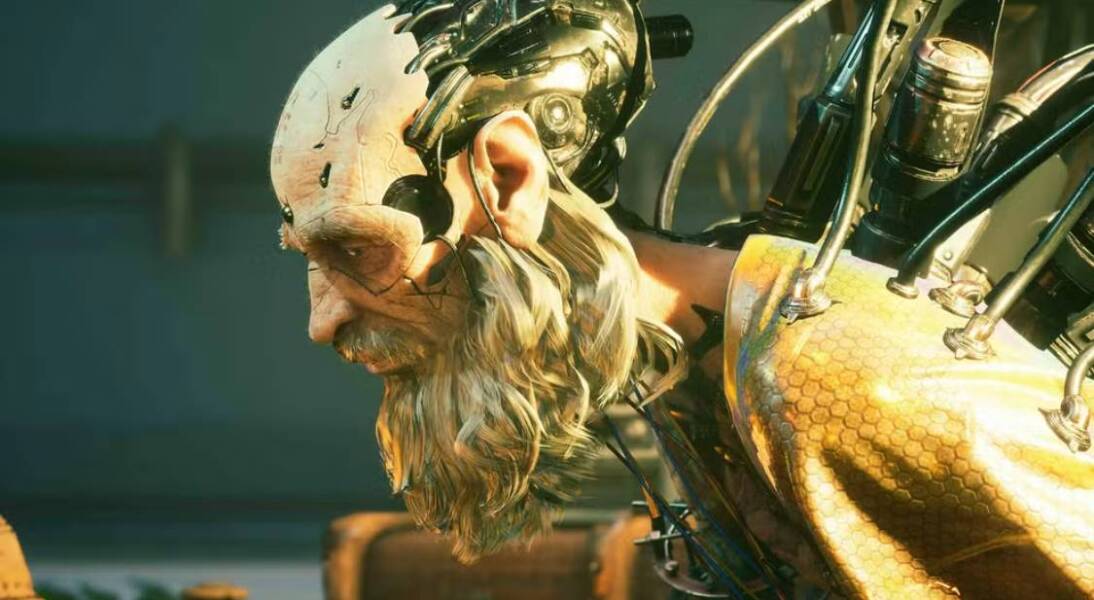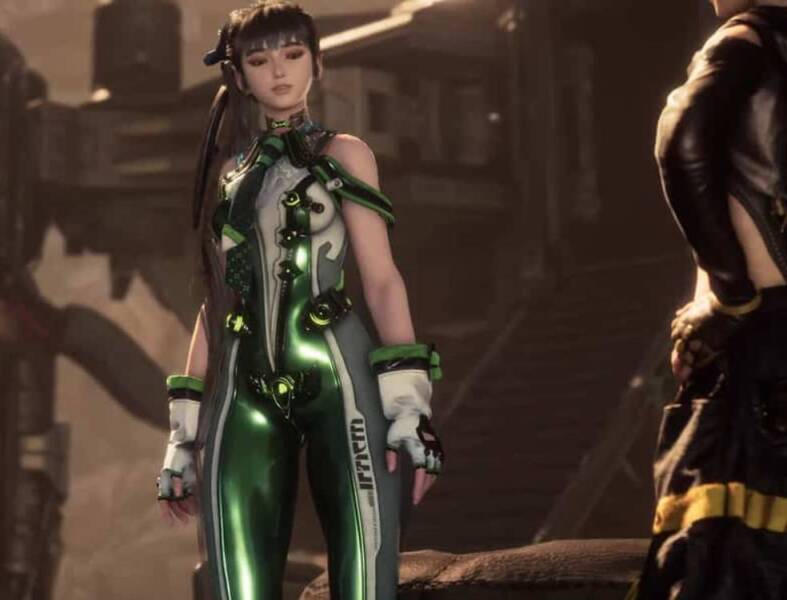Stellar Blade is a futuristic action game with RPG elements developed by Shift Up, released exclusively for PlayStation 5 (PS5) on April 26th. Its story revolves around Eve, a warrior from the heavens who needs to venture into a post-apocalyptic version of Earth inhabited by Natybas, hostile monsters that decimated almost the entire human race. To do this, she needs to fight with common enemies and different bosses, in a gameplay that mixes traditional souls-like elements with frenetic Japanese RPGs.

Not surprisingly, the highlight of Stellar Blade is, precisely, its action-packed fights, in which Eve can use different combos to advance in her mission to recover life on Earth. However, the clichéd story and the poor construction of characters, especially the protagonist, are some negative points. TechbusinessHQ had the opportunity to test the PS5 exclusive fully dubbed in Portuguese, and brings all our impressions below.
Cliché but interesting story
Stellar Blade follows the formula of every story based on a post-apocalyptic scenario, where the world has been dominated by some threat that has reduced the number of humans on earth to almost zero. This time, the enemy in question are the Natybas, mysterious beings that closely resemble monstrous aliens. They are divided into different threat levels, with the Alpha Natybas being Eve’s main target.
In the first few minutes of gameplay, one of these powerful monsters murdered the entire 7th Air Squadron, a platoon in which Eve was a member. This group originates from the Colony, a futuristic society located in the heavens that houses part of what remains of humanity, and which seeks to reconquer the Earth. Conveniently, the character is saved at the last minute by Adam, an engineer from Xion, the last city on the planet, and becomes the survivor responsible for avenging all her dead companions.
Eve and Adam
From then on, Eve and Adam, who accompanies her indirectly via a drone, continue in search of Natyba Alfa. This can be considered the first part of the game, in which the protagonist goes through closed phases similar to Dark Souls. Events happen quickly and, in a way, a little confusingly, as if a lot of information happened at the same time. Therefore, the user is not very motivated by the story, which does not seem to want to explain in depth what the Colony, the Natybas or other elements are.
However, after much confrontation and exploration, we meet Lily, the final piece of the trio of main characters. With this, we are taken to the city of Xion itself, at which point the game becomes an open world similar to what we see in Final Fantasy VII Rebirth, but in a reduced form.

The big question in Stellar Blade’s story is this division between closed and open world. Before Lily and the city of Xion, the narrative seems like just an excuse for us to move forward attacking enemies, doing cartwheels and showing off all our “cyborg swordsman” power. The problem is that this transition takes a long time, something that, if it were not supported by fun gameplay, could become boring for the player.
Mysteries on the map
Despite this, the game’s universe holds mysteries on the map and secondary missions with profound characters who seem to be in the last moments of humanity, and who need help to survive in this chaotic world. In Xion, for example, there are several enigmatic figures, which make the user want to find closure for these victims of the Natybas.
Therefore, Eve needs to find Natyba Alfa and discover secrets that can help save the earth, something obvious from the beginning of the game. However, much more than an uninnovative premise, something common in a gaming industry in which everything seems to have already been invented, the protagonist is the main reason why the beginning of the story is slow, precisely because she is practically alone and presents a non-existent charisma — which we will talk about later.
Gameplay is the flagship
Stellar Blade’s gameplay is a great mix of genres. All of its design inspired by Japanese anime makes it seem like the game would be a frantic hack’n slash, or even an action RPG seen recently in Final Fantasy XVI. These elements are present, but the game doesn’t seem to fit entirely into any defined style.
Perhaps the best way to define the PS5 exclusive’s gameplay is a light souls-like, as if the developers wanted to make an “Elden Ring for noobs”, both in difficulty and in depth of content. This is not necessarily a criticism of Eve’s adventure, given that the genre has become hostage to the resounding success of From Software’s game. In reality, the game is a reminder that there are other options for lovers of the style, especially for those less experienced.
Eve uses a sword throughout the game, with no other weapons to choose from. She can give light and heavy blows, dodge, defend herself and perform four different special attacks — separated into square, triangle and the like. There is also a skill tree, which allows you to increase the strength of your movements and create extra combos after a perfect parry or dodge.
The sword is a pistol
The only exception besides the sword is a pistol which, to be blunt, is very weak. In addition to the low damage, the ammunition is rechargeable, making it possible to find them on the ground or buy them in camps spread across the map. It’s an element that adds style points to gameplay and can help break the armor of certain Natybas. However, in terms of combat quality, it is something easily dispensable.
So, virtually, the protagonist only uses her blade for much of the adventure. This is something that limits play styles, making it possible to just perform the same combos all the time. For example: in Rise of The Ronin, another PS5 exclusive, the user can use two weapon models per character and swap them mid-strike, which allows them to create new attacks in tune with their spear, staff or even companion. team. Stellar Blade, in turn, is just Eve with her sword all the time, with the same special abilities and movements during the fight.
On the other hand, the character’s Exoskeleton can be modified according to the player’s taste. Theoretically, this is where gameplay may vary slightly, as different armor components provide unique bonuses, whether increasing attack speed, resistance against Natybas, or even decreasing skill recharge times.
However, honestly, these changes do not appear to be different in practice. This increases the feeling that, regardless of your choices, the combos will always be identical, the damage will always be the same, and the Natybas always hurt the same way.
Even so, as incredible as it may seem, the game’s gameplay is fantastic. Eve is a fluid and very skilled character, making the millions of identical sequences of attacks always as cool as the first. Not surprisingly, as already said, the gameplay carries the first part of the game on its shoulders, because even though we don’t understand very well what is happening around us, the narrative doesn’t matter much when we are dividing Natybas into pieces.
Furthermore, this is a game that, precisely because of its fluidity, is naturally easier than many other soulsikes. At the same time, it is not as dynamic as a Devil May Cry or an Infamous Second Son, since pressing buttons in a crazy and disconnected way, however attractive it may be, is a guarantee of defeat against the Natybas.
The impression is that each step of Stellar Blade is designed to balance the user’s interests. When the gameplay starts to get boring and monotonous, the open world arrives to make the story worthy of attention. The ideal, of course, would be for there to be more skills available and an interesting narrative from the first minute, as well as more diversity of enemies or missions. These would be factors that could take the game to an even greater level.
Eve is the biggest problem
It’s no secret that Stellar Blade is surrounded by controversy due to Eve. However, much more than a hypersexualized figure, the character lacks development and emotions. Just like an RPG class, in which it is necessary to distribute points in categories such as dexterity, strength, intelligence and the like, it seems that the developers decided to reset the protagonist’s charisma points to zero, to focus all efforts on modeling her intimate parts — which , it is worth highlighting, they have their own physics.
Eve isn’t able to react. Her face is always the same, something that is often not in line with her lines spoken during the story. The protagonist literally saw her squad friend have her arm ripped off and her chest pierced during Natyba Alfa’s attack. Even so, she continues without shedding a tear or showing fear. She reminded me a lot of Aiden Pearce from Watch Dogs, the main character of the Ubisoft game who also went through several traumas, but also had his feelings poorly developed.
During dialogues with Adam and, later, all the other inhabitants of Xion, Eve makes it clear that she wants to help everyone. Her attitudes follow the playbook of the heroic protagonist, who wants to save the world and cannot rest. However, she is so inexpressive that it makes us doubt her motivations, something that puts the brilliance of the narrative under the responsibility of other figures in the game. Lily, for example, in just a short amount of screen time, is able to captivate the player even more, despite the fact that she isn’t an excellent character either — her Japanese dubbing is appalling.

Not surprisingly, the “fault” of the beginning of the game being uninteresting is precisely because of Eve’s lack of charisma. Adam, who is also another inexpressive character, is on her side just like a drone. In other words, the protagonist is alone in a world full of monsters, without the possibility of in-depth dialogue with other people.
Being on your own in a hostile universe is also not something new in games. A clear example is Horizon Zero Down, in which Aloy remains for much of the time accompanied only by machines. The difference that makes her much more striking than Eve is the contextualization of her story, even if partially, right at the beginning. This is something that makes us understand and accept her motivations, even without her saying a word for hours during the exploration.
A different example is Dante himself from Devil May Cry. The character’s cynicism and his way of mocking all his enemies means that he can carry many sections completely alone, precisely because of his unique charisma. Of course, both games mentioned occasionally feature partners for the protagonists — as does Stellar Blade. However, the list of games in which the central figure remains isolated exploring and, even so, manages to captivate his audience, is quite extensive.
Eve’s exaggerated sexualization is not problematic “just” because it focuses attention on her body or camera angles. It’s something that clearly took time to develop, and that could have been used to better build facial expressions or even, who knows, gameplay diversity. No wonder, there are 39 different skins for the protagonist, something that would be highly praised if the majority weren’t created just to explore her unreal beauty.
Is Stellar Blade worth it?
As a man, of course the hypersexualization of Stellar Blade didn’t affect me as much as it would a woman. However, as a gamer, it is sad to see a game with high potential, and which could have been more accepted by the general public, being looked at with different eyes. Everyone’s attention is focused on the sensual side of the game, something that, in reality, is not even an element of the story — after all, Eve can’t even be sexy.
Stellar Blade is definitely a game that entertains the user, but can alienate many due to its controversies. Anyone who sees the trailer, for example, doesn’t see a story with characters traumatized by the Natybas, but who want to move on with their lives. Likewise, the exceptional gameplay is placed in the background, being one of the last things to be remembered in the PS5 exclusive.
The focus is, naturally, on Eve’s body, who could have been a great protagonist if she were as charismatic as she was beautiful. The narrative is compromised for this reason, not being a game that enchants, but one that draws attention due to the mysteries of the story and gameplay that is almost worthy of full marks.

Ingrid Maldine is a business writer, editor and management consultant with extensive experience writing and consulting for both start-ups and long established companies. She has ten years management and leadership experience gained at BSkyB in London and Viva Travel Guides in Quito, Ecuador, giving her a depth of insight into innovation in international business. With an MBA from the University of Hull and many years of experience running her own business consultancy, Ingrid’s background allows her to connect with a diverse range of clients, including cutting edge technology and web-based start-ups but also multinationals in need of assistance. Ingrid has played a defining role in shaping organizational strategy for a wide range of different organizations, including for-profit, NGOs and charities. Ingrid has also served on the Board of Directors for the South American Explorers Club in Quito, Ecuador.







